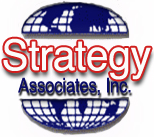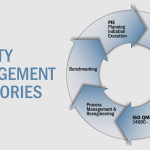Develop the Quality Management Plan
Description
The Quality Management Plan defines the acceptable level of quality, which is typically defined by the customer, and describes how the project will ensure this level of quality in its deliverables and work processes. Quality management activities ensure that:
- Products are built to meet agreed- upon standards and requirements
- Work processes are performed efficiently and as documented
- Non-conformances found are identified and appropriate corrective action is taken
Quality Management plans apply to project deliverables and project work processes. Quality control activities monitor and verify that project deliverables meet defined quality standards. Quality assurance activities monitor and verify that the processes used to manage and create the deliverables are followed and are effective.
Quality Plan Components
The Quality Management Plan describes the following quality management components:
- Quality objectives
- Key project deliverables and processes to be reviewed for satisfactory quality level
- Quality standards
- Quality control and assurance activities
- Quality roles and responsibilities
- Quality tools
- Plan for reporting quality control and assurance problems
Rationale/Purpose
The purpose of developing a quality plan at the Stage 3 level is to elicit the customer’s expectations in terms of quality and prepare a proactive quality management plan to meet those expectations.
The Quality Management Plan helps the project manager determine if deliverables are being produced to an acceptable quality level and if the project processes used to manage and create the deliverables are effective and properly applied.
Who Is Involved
- Project Manager
- Project Team
- Customer
- Project Sponsor
Result
Quality Management Plan segment of the Project Plan
Recommended Actions and Strategies
The tables below describe actions you perform to create a quality management plan. Use the Quality Management Strategy developed in the Initiate Stage as input to the Quality Management Plan.
| Set Overall Quality Objectives | ||
|---|---|---|
| What to do | How to do it | |
| 1 | Identify the overall quality objectives for the project |
State the quality objectives in terms of the project objectives and/or organizational objectives. Determine quality objectives for the product with the customer. There may be overall organizational quality objectives or policies that the project can reference. |
| Plan for Quality Project Deliverables – Quality Control | ||
|---|---|---|
| What to do | How to do it | |
| 1 | Identify the key project deliverables that will be subject to quality review |
The key deliverables are the results that need to be delivered fit-for-purpose as identified in the project charter. Example project deliverables:
|
| 2 | Identify the key project deliverables that will be subject to quality review |
The key deliverables are the results that need to be delivered fit-for-purpose as identified in the project charter. Example project deliverables:
Example industry quality standards/ methods: TQM, Six Sigma, Quality Gates, SPC, Zero Defects, quality circles, continuous improvement, ISO 9000 Example quality standards for a project deliverable:
|
| 3 | Identify the completeness and correctness criteria |
Completeness and correctness criteria are defined from the customer’s point of view. Work with the customer to define a “complete and correct” deliverable. The deliverables are evaluated against these criteria before they are formally approved. Example criteria for Project Charter:
Example criteria for a product:
|
| 4 | Describe the Quality Control activities the project will use to ensure quality standards for project deliverables are met |
“Quality Control makes sure the results of what you have done are what you expected. Quality control is product oriented.” Quality control activities are associated with the creation of project deliverables. Quality control prevents and resolves errors in project deliverables. Quality Control verifies that deliverables are of acceptable quality and they meet the deliverable quality standards and the completeness and correctness criteria established. For each deliverable, describe the quality control activities you will execute. Example quality control activities:
|
| 5 | Determine how often or when the quality control activity will be performed |
Establish the timeframe or recurring frequency for performing the quality control activity. Examples: |
| Plan for Quality Project Processes – Quality Assurance | ||
|---|---|---|
| What to do | How to do it | |
| 1 | Identify the critical project processes that will be subject to quality review |
Critical project processes are the activities that must be undertaken correctly and effectively to create the deliverables. Example project processes:
|
| 2 | Identify the relevant process quality standards for evaluating the quality of the project processes |
Identify the relevant process quality standards, or “measures” used to determine a successful outcome for a deliverable. Ideally your organization has identified quality standards to be applied. If not, determine what you will use for your project. Example industry quality standards/ methods: TQM, Six Sigma, Quality Gates, SPC, Zero Defects, quality circles, continuous improvement, ISO 9000 A written procedure is also a “standard” that defines the steps to execute a process. Example standards for a project process:
|
| 3 | Identify stakeholder expectations for project processes |
Work with the project stakeholders to define what it means for a project process to meet their expectations. The project process is then evaluated against these expectations. Example stakeholder expectations:
|
| 4 | Describe the Quality Assurance activities to be used to ensure the quality standards for project processes are met |
“Quality Assurance makes sure you are doing the right things, the right way. Quality Assurance is process oriented.” Quality assurance refers to the internal work processes used to manage and deliver the solution. Quality assurance activities make sure project processes used to manage and deliver the project’s product or service are effective and being applied. Quality assurance can be performed by a manager, customer or third-party reviewer or separate quality assurance group. Example quality assurance activities:
Example quality audit questions:
For Project Reporting process:
For Product Transition process:
|
| 5 | Determine how often or when the quality assurance activity will be performed |
Establish the timeframe or recurring frequency for performing the quality assurance activity . Example: |
| Identify Quality Roles, Tools and Problem-reporting Procedures | ||
|---|---|---|
| What to do | How to do it | |
| 1 | Identify the quality control and quality assurance roles and responsibilities for the project and actual resources assigned |
The quality roles and responsibilities were identified in the project charter, and actual resources were assigned in the staffing plan. |
| 2 | Identify any quality-related tools used to support quality |
Identify the tools you will use and their purposes or uses . Example:
|
| 3 | Define the quality control and quality assurance problem reporting plan |
Describe the plan to itemize, document and track to closure items reported through the quality control and quality assurance activities. All problems must be tracked to closure and feedback provided to appropriate stakeholders and the project team concerning the status of the problem. |

